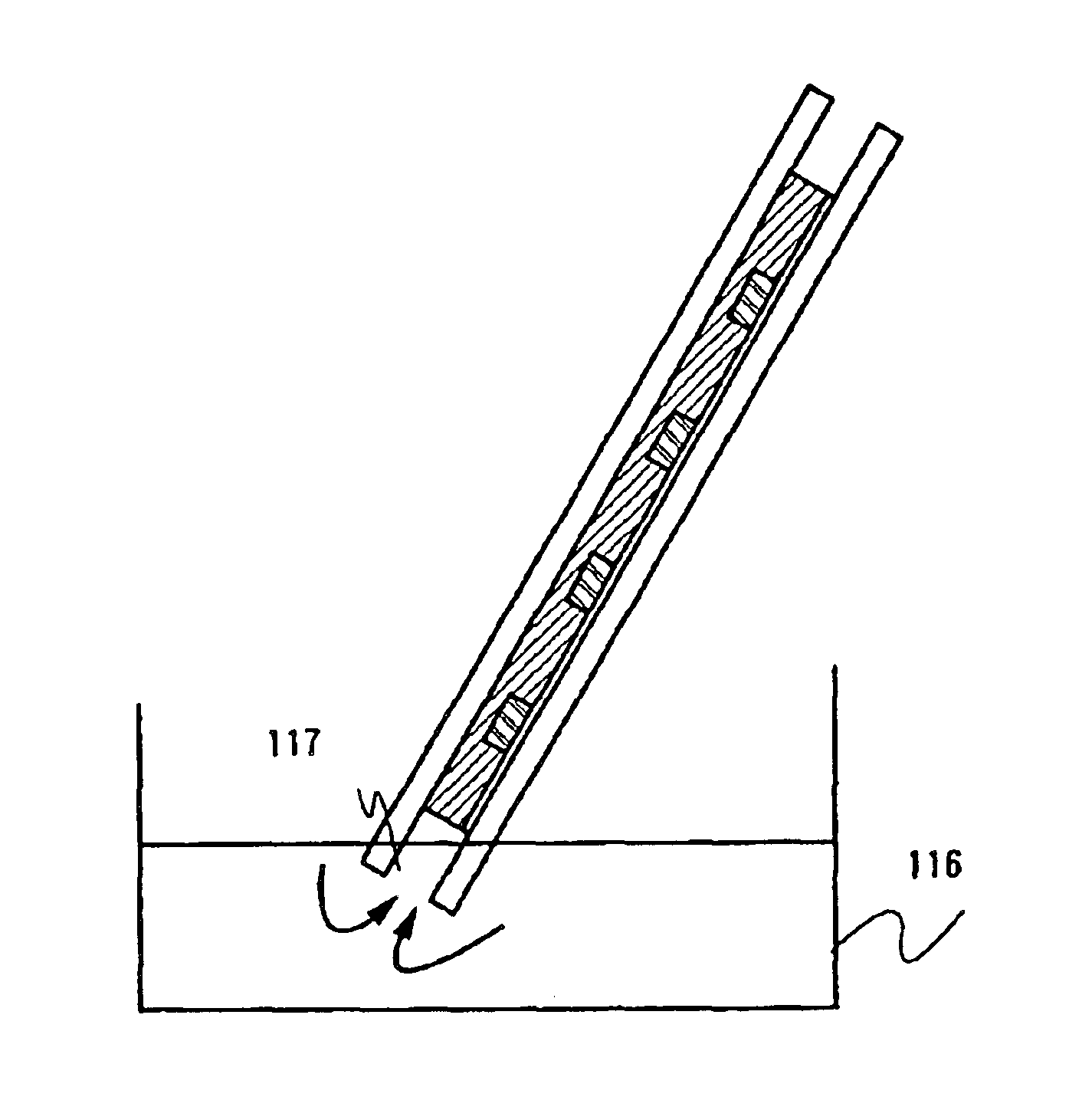Organic thin film transistor and method of manufacturing the same, and semiconductor device having the organic thin film transistor
a thin film transistor and organic technology, applied in semiconductor devices, solid-state devices, electrical equipment, etc., can solve the problems of not being able to apply the method, not being able to meet the requirements of large-scale use of effective substrate materials, and requiring a lot of material and man-hours for maintenance of apparatuses
- Summary
- Abstract
- Description
- Claims
- Application Information
AI Technical Summary
Benefits of technology
Problems solved by technology
Method used
Image
Examples
embodiment mode 1
In this embodiment mode, description will be made of a method of forming an organic semiconductor film at a predetermined portion through injection.
As shown in FIG. 1A, an element substrate 110 is prepared on which a gate electrode 101 formed on an insulating surface thereof, a gate insulating film 102 provided so as to cover the gate electrode (refer to a sectional view taken along the line A-A' of FIG. 1A), a source electrode and a drain electrode 103 provided so as to overlap end portions of the gate electrode through the gate insulating film, and an insulating film (hereinafter referred to as bank) 104, which is provided on the source electrode and the drain electrode and has a desired opening portion 105, are formed. Note that the opening portion includes a groove and a concave portion which are provided between adjacent banks, and is not limited in terms of shape and size, and that the opening portion may be provided over pixels or provided to each pixel. Further, a substrate ...
embodiment mode 2
In this embodiment mode, FIGS. 13A and 13B show an example of a case where: an offset structure is taken in which a first substrate and a second substrate are superimposed such that ends thereof are not aligned with each other; and a solution containing an organic material is dropped.
First, as shown in FIG. 13A, similarly to Embodiment Mode 1, a gate electrode 1301, a gate insulating film 1302, a source electrode and a drain electrode 1303, and an insulating film 1304 that is to serve as a bank are formed on an insulating substrate 1310, and an injection auxiliary substrate 1312 is adhered to the insulating substrate 1310 to form an aperture 1305. The substrates are adhered to each other with an offset region 1320 provided in a state in which an end of the adhered insulating substrate (first substrate) 1310 is long shifted from an end of the injection auxiliary substrate (second substrate) 1312 (refer to a sectional view taken along the line A-A' of FIG. 13A). Note that, as to the a...
embodiment mode 3
In this embodiment mode, a description will be made of a case where: when an organic semiconductor material or the like has anaerobic property, manufacturing steps of a TFT, particularly, an injection step of an organic material for forming an organic semiconductor film is performed in an anaerobic atmosphere; and sealing is performed while the above state is maintained to attain hermetic sealing, with reference to FIGS. 5A to 5C.
An element substrate (first substrate) is formed similarly to Embodiment Mode 1. Then, as shown in FIG. 5A, a seal member 502 is formed on the substrate, and a first substrate and a second substrate are fixed to each other so as to have at least two opening regions 501a and 501b where the seal member does not exist. Then, the first substrate and the second substrate are superimposed and hermetically adhered to each other through application of a uniform pressure to the entire surface by sealing member 502 while which is hardened. Note that the seal member 5...
PUM
| Property | Measurement | Unit |
|---|---|---|
| thickness | aaaaa | aaaaa |
| thickness | aaaaa | aaaaa |
| pore size | aaaaa | aaaaa |
Abstract
Description
Claims
Application Information
 Login to View More
Login to View More - R&D
- Intellectual Property
- Life Sciences
- Materials
- Tech Scout
- Unparalleled Data Quality
- Higher Quality Content
- 60% Fewer Hallucinations
Browse by: Latest US Patents, China's latest patents, Technical Efficacy Thesaurus, Application Domain, Technology Topic, Popular Technical Reports.
© 2025 PatSnap. All rights reserved.Legal|Privacy policy|Modern Slavery Act Transparency Statement|Sitemap|About US| Contact US: help@patsnap.com



